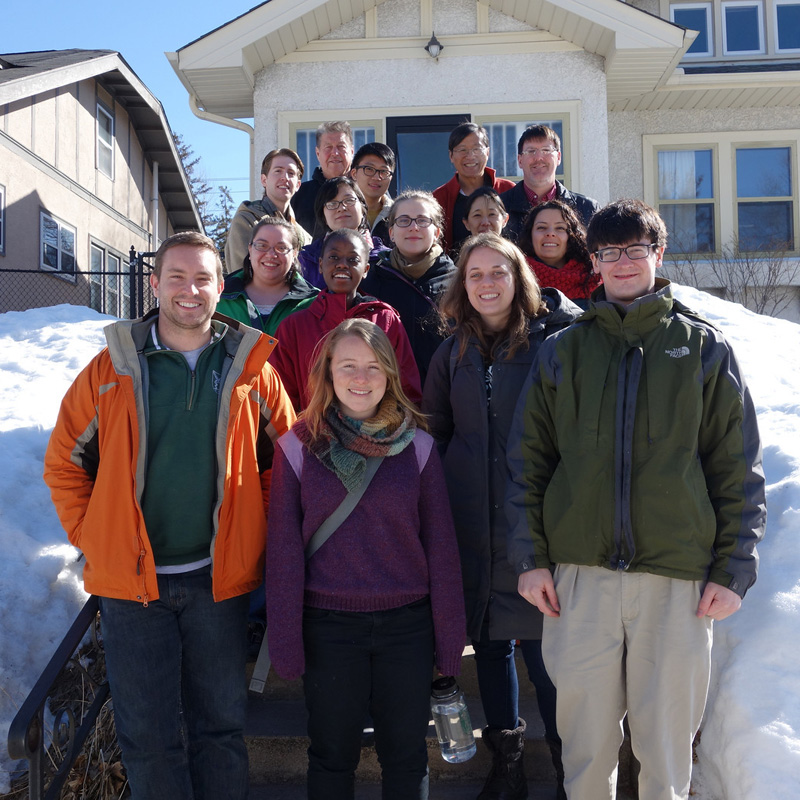By Larry Di Giovanni
Note: This is the first of a four-part series examining the Geisel School of Medicine’s long-standing work in primary care with American Indian and Alaska Native communities. Read parts two, three, and four for more.
From New England to Alaska, the impact of Dartmouth's Geisel School of Medicine within American Indian and Alaskan Native populations, rural and urban, is strong and expanding.
The reasons are many: compassionate students with a desire to serve the underserved; new opportunities for clinical teaching in family medicine, which means more mentors and student experiences in Native American communities; primary care physicians who step forward to serve as role models; and diverse primary care clerkships and residencies that reach into American Indian/Alaskan Native country. In addition, a Memorandum of Understanding with the Indian Health Service and Dartmouth, signed in 2012, is strengthening opportunities for collaboration.
Just as important has been Dartmouth College’s unwavering, long-standing commitment. Since 1769 as part of its founding charter, Dartmouth has been engaged in the education of Native Americans. Over the past few decades, that commitment has created a range of medical education experiences that introduce students to these communities and their health care needs, ultimately leading to improved health care delivery for Native Americans.
Just one such “incubator” program started by Shawn O’Leary, Geisel’s director of multicultural affairs, has grown in impact and importance. Each March since 2010, a new group of first-year medical students has accompanied O’Leary to northern Minnesota for the Geisel-Indian Health Service alternative spring break serving five bands of the Ojibwe (Chippewa) tribe.

During their week-long stays, a total of 64 students to date have gained valuable medical experience by shadowing physicians in tribal and IHS clinics, making home visits, and by engaging in educational outreach at schools. This past spring, O’Leary and 10 students visited the Red Lake, Leech Lake, and White Earth communities.
“It’s the big question: How can I make these experiences the most meaningful for the Ojibwe people and their communities we visit?” poses O’Leary, a member of the Bois Forte (MN) Band of Chippewa. “Absolutely, the whole essence of the trip is about the exposure our students receive, and their beginning to think about future practice in under-served communities.”
O’Leary continuously examines new ways for Geisel students to engage with Native American communities throughout their four years of education. He recommends they participate in the alternative break their first year, conducting research in a tribal area in year two, and completing a clerkship in family medicine or pediatrics during their third year. A fourth-year elective is also possible.
O’Leary referenced a study from the Association of American Medical Colleges, which found that students who engaged early in their medical school educations with under-served communities are far more likely to work in those settings as physicians.
Students on alternative spring break: A stepping stone to primary care
Geisel medical student Cassandra Rendon, a participant in the most recent alternative spring break, is a member of the Turtle Mountain Band of Chippewa in Belcourt, N.D. From a large family with five sisters and two brothers, she is leaning toward a primary care career in pediatrics and wants to serve her people, who include the Oglala Sioux on her father’s side.
It’s not just that more doctors are needed (to work with American Indians). I want to be part of a movement wherever I go to produce culturally competent physicians who provide the best medical care that improves lives.” Cassandra Rendon, Geisel Student
Rendon was selected as team leader of a group visiting the Red Lake community. She participated in a home visit with a nurse to check on a mother and her baby, and shadowed physicians and a nurse practitioner tending to patients at Red Lake Hospital. She was particularly interested in observing how physicians and nurses interact with patients.
Given the scope of health care disparities that Native Americans face, which include high rates of cancer, diabetes, and mental and behavioral health issues, she said developing good physician-patient communication is critical to deliver high-quality primary care. Red Lake Hospital was praised by spring break students for being a joint tribal-Indian Health Service facility that prioritizes use of tribal members as health care providers.
“It’s not just that more doctors are needed (to work with American Indians),” Rendon emphasizes. “I want to be part of a movement wherever I go to produce culturally competent physicians who provide the best medical care that improves lives.”
Providing student role models in the community is also important, Rendon said. She and her colleagues spent one of their first days of the trip in Fon du Lac, visiting a tribal clinic and offering school presentations to students in grades 8-12.
Rendon partnered with a master’s in public health student, Sappho Gilbert, to offer eighth-graders a visual presentation partly focused on medical technology including MRIs, X-rays and PT scans. They also encouraged students to consider careers in medicine and public health, discussing the key roles physicians, nurses, nurse practitioners, physician’s assistants, and public health workers.
“Youth are the future,” O’Leary says. “When our students visit schools, they want to impress upon our young audiences the importance of education, healthy lifestyles, and making good choices.”
About the author:
Larry Di Giovanni has written about higher education, health care and Native-American communities including K-12 education for 20 years. He lives in Athens, Ohio.